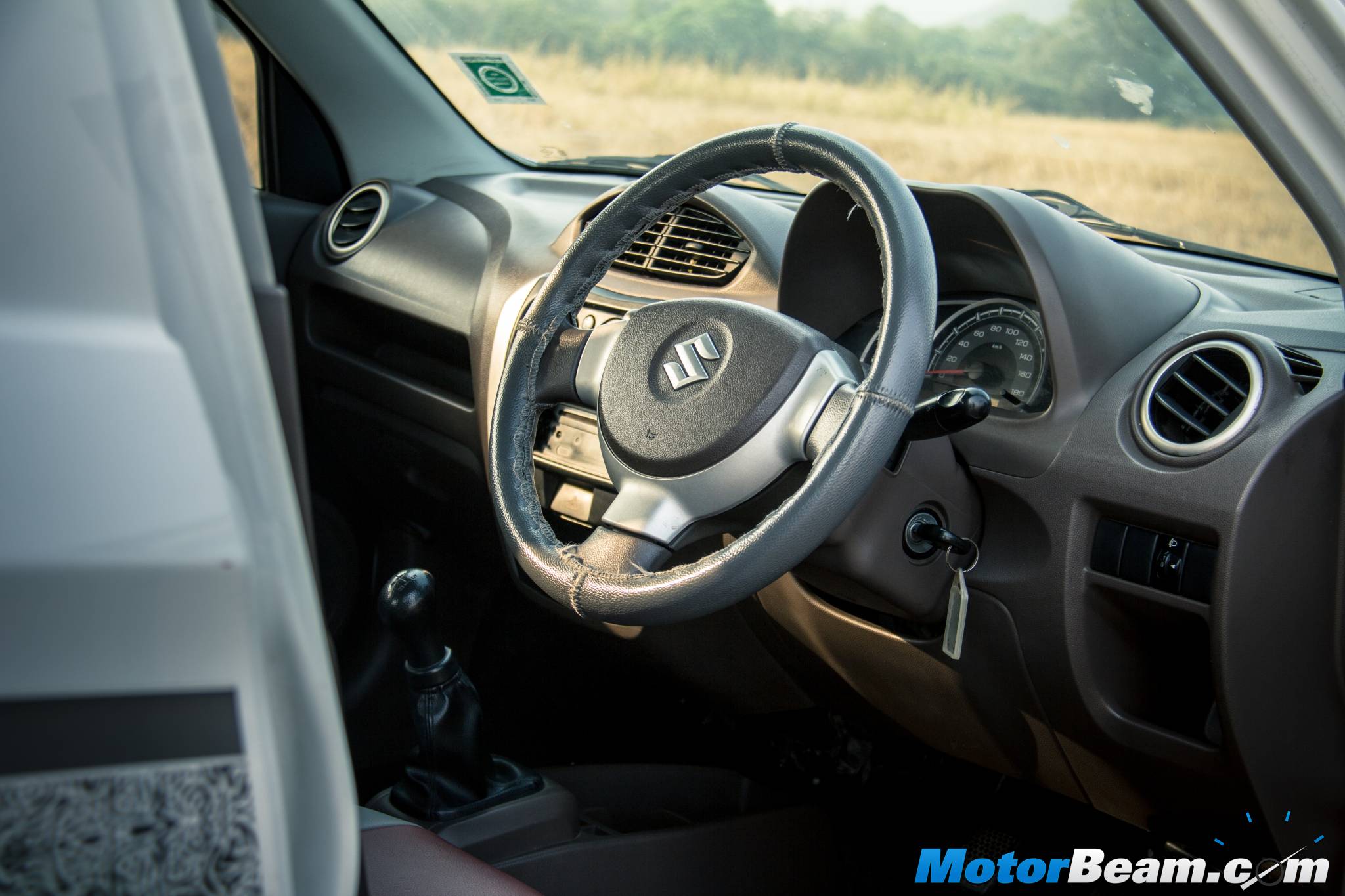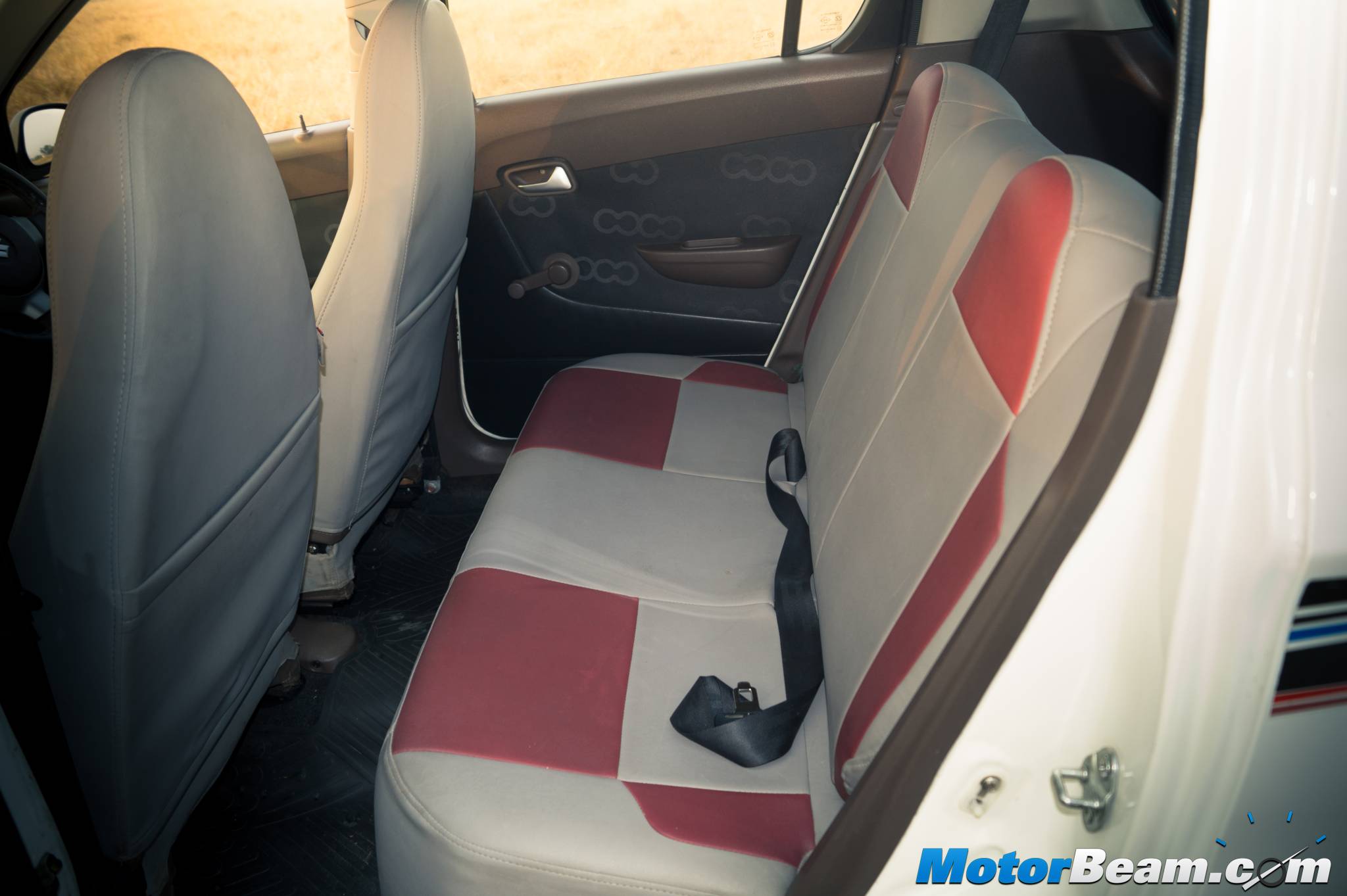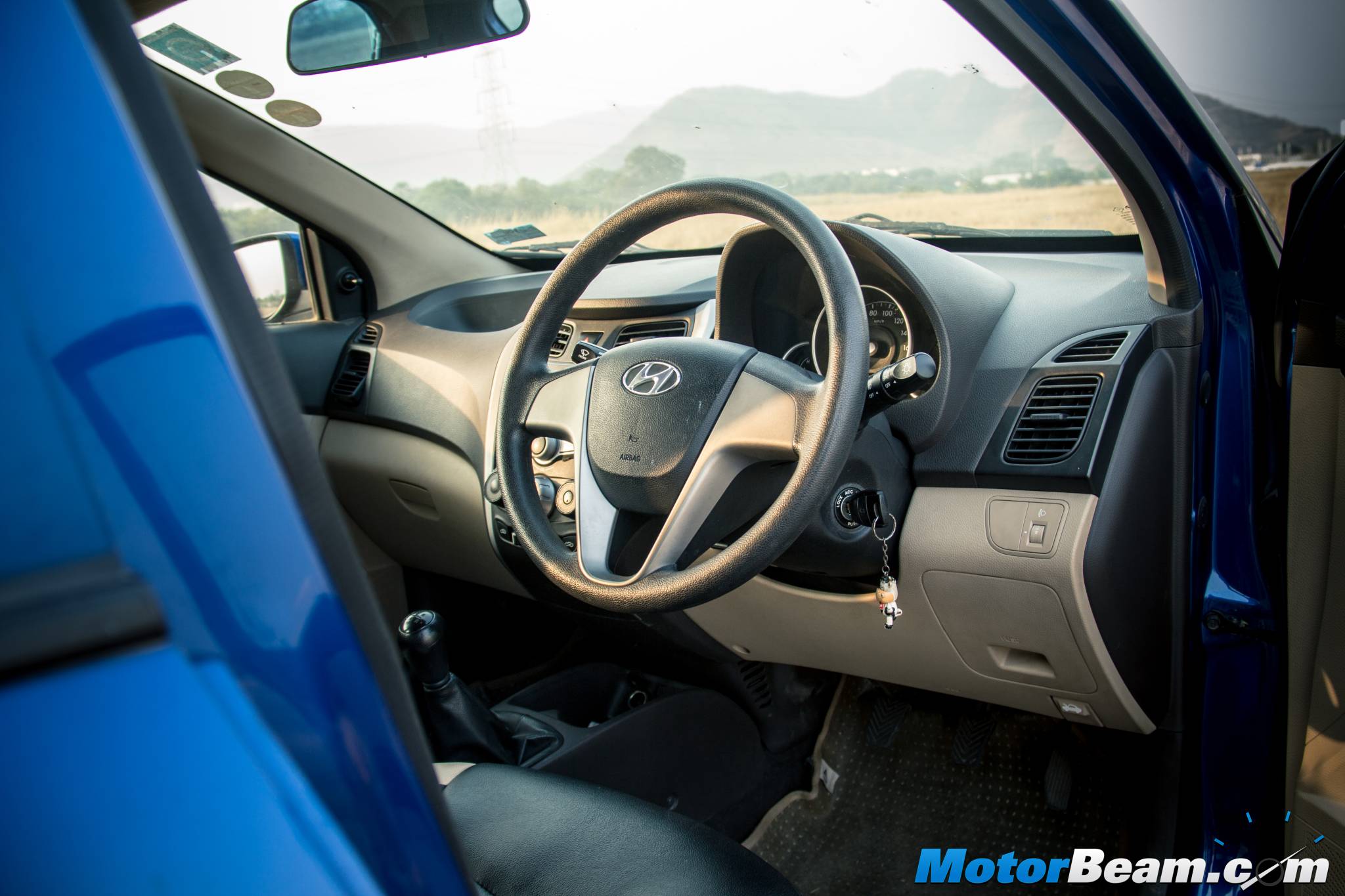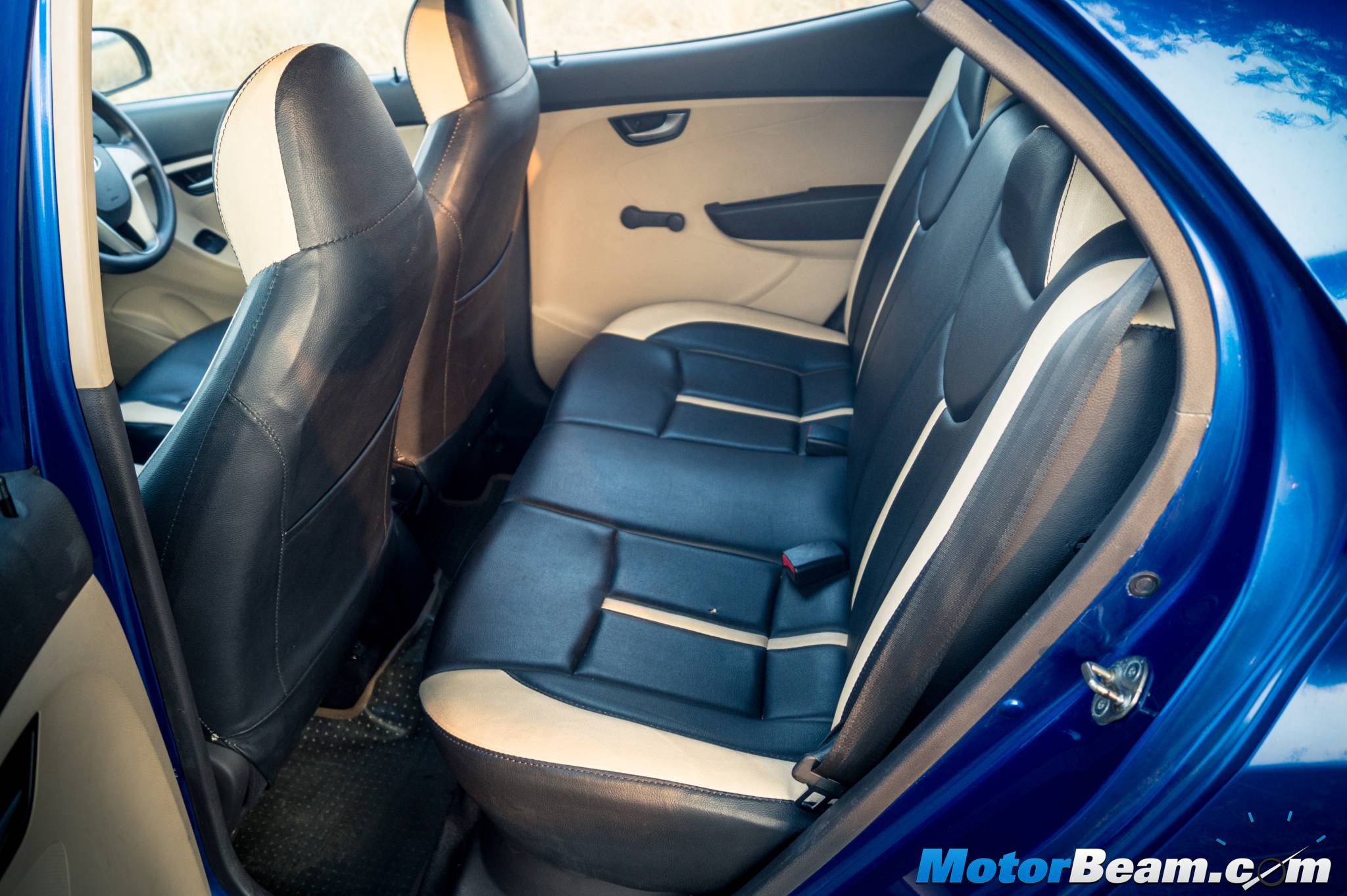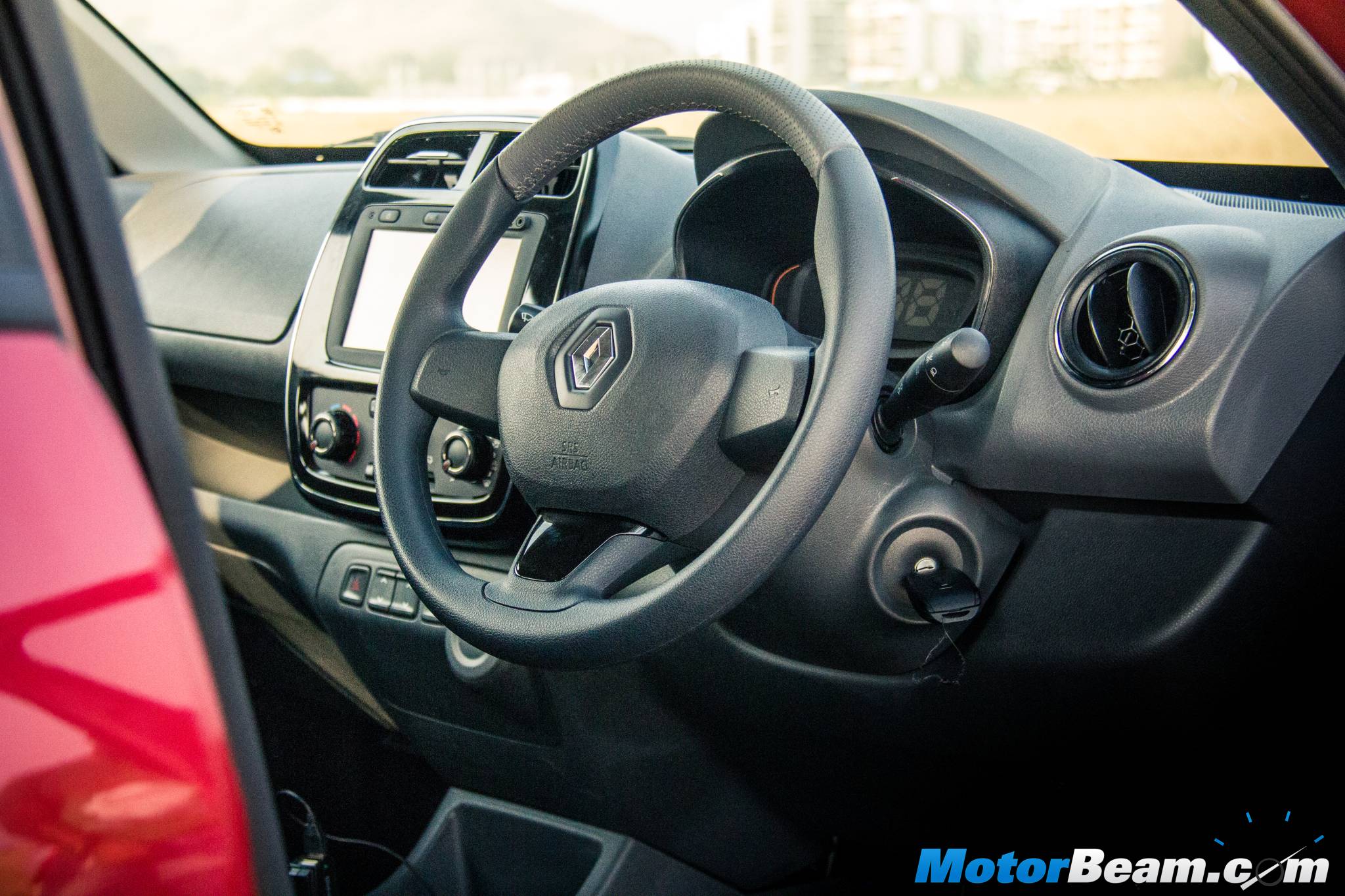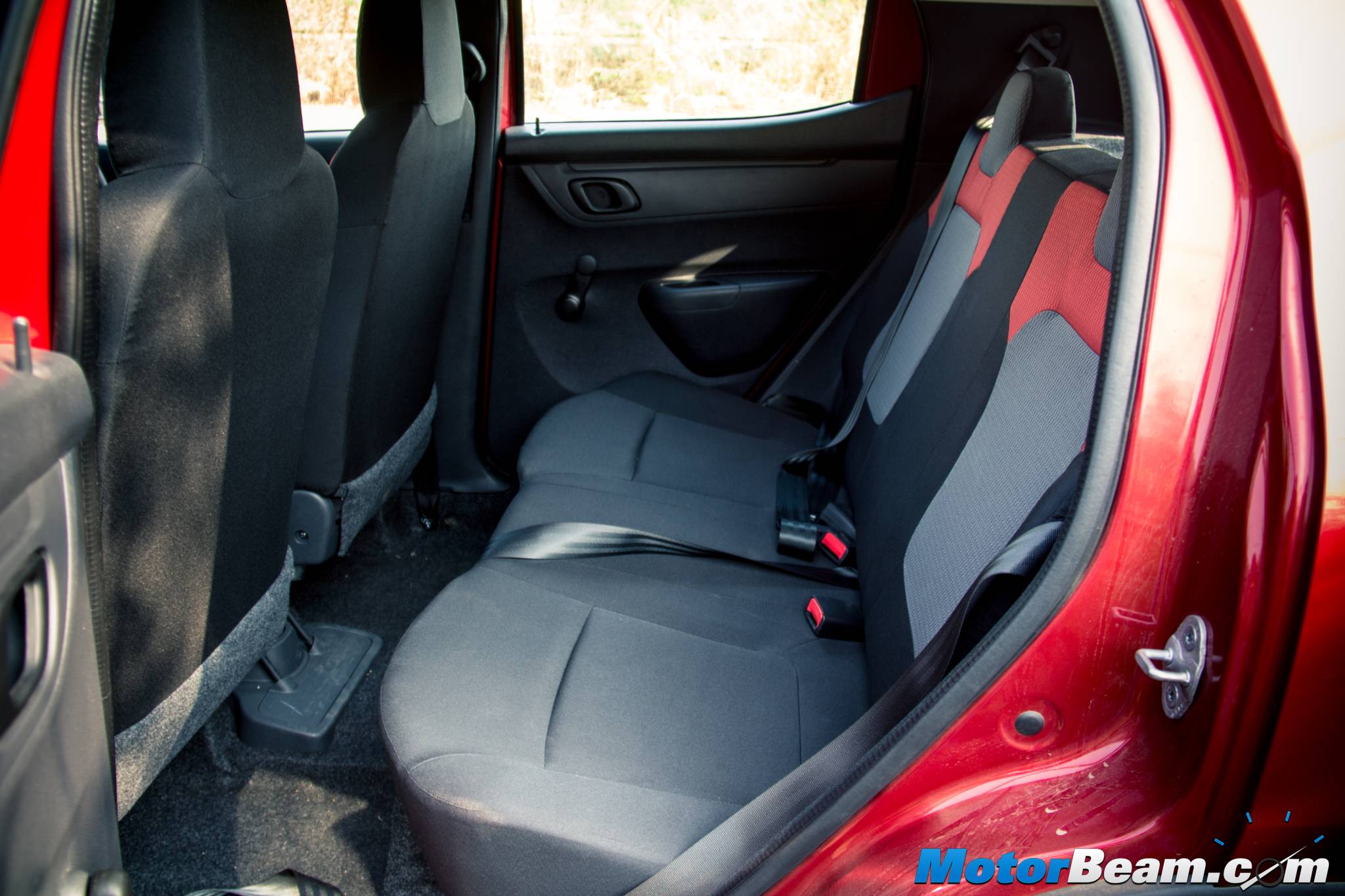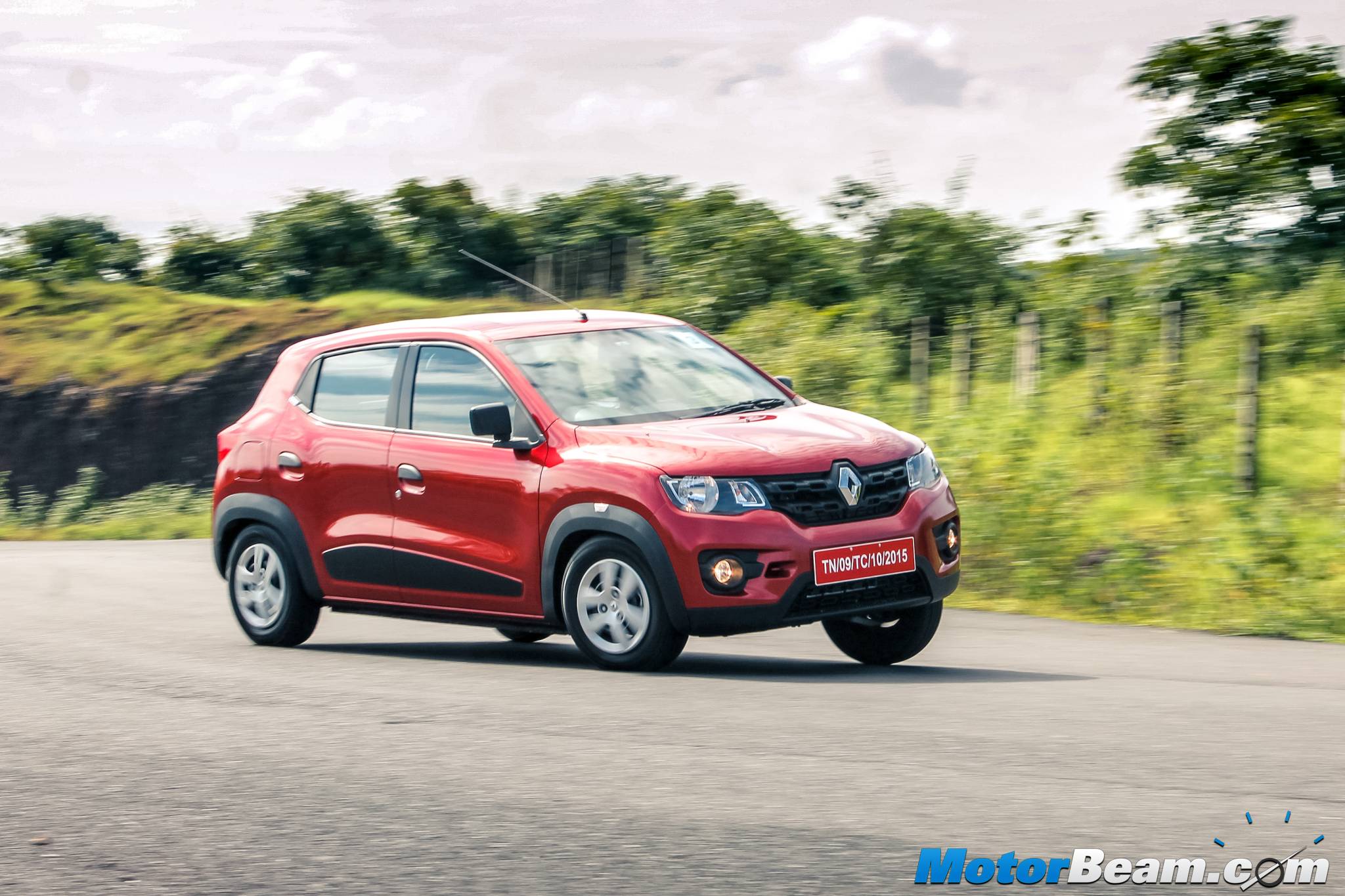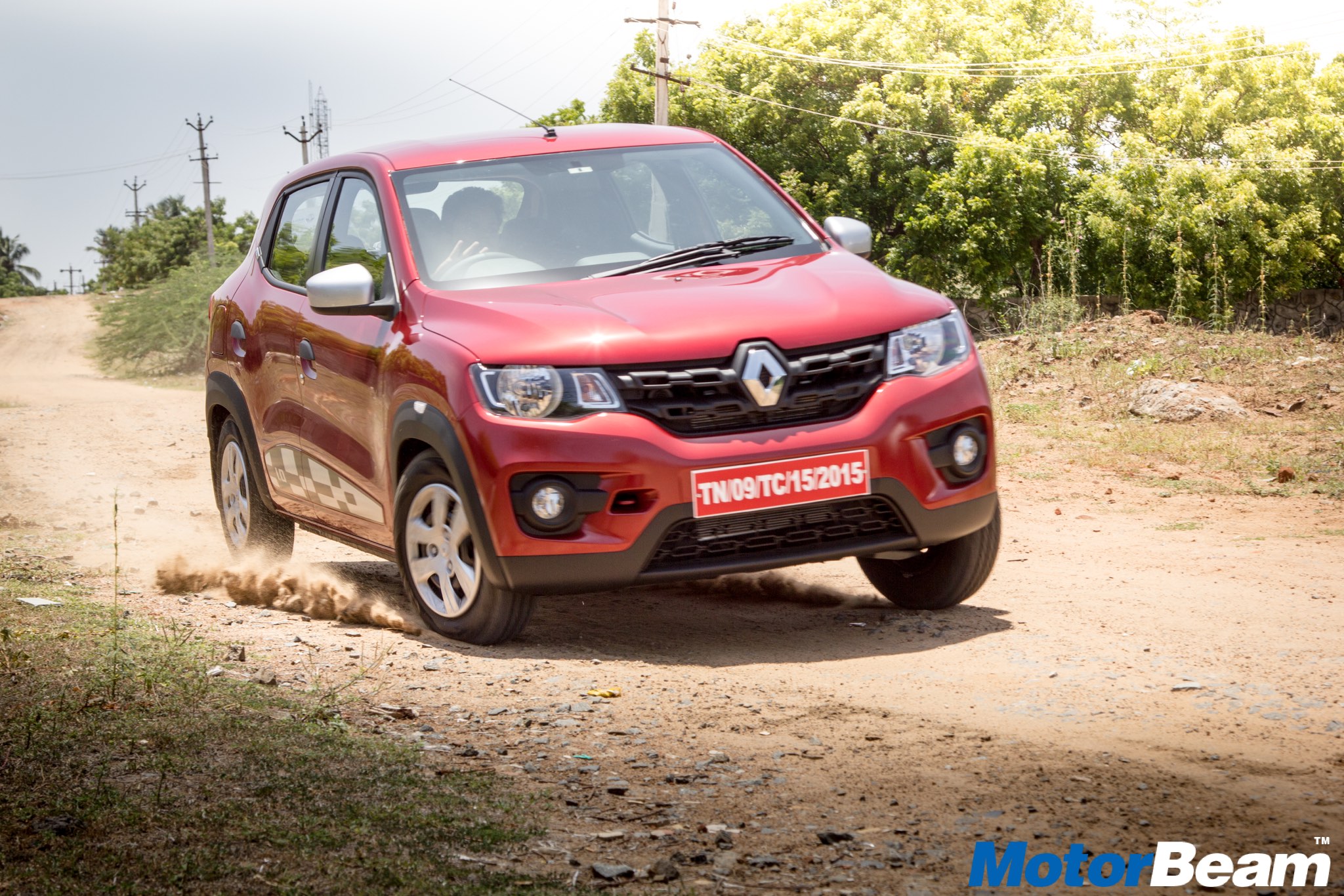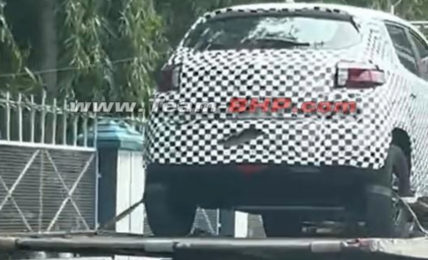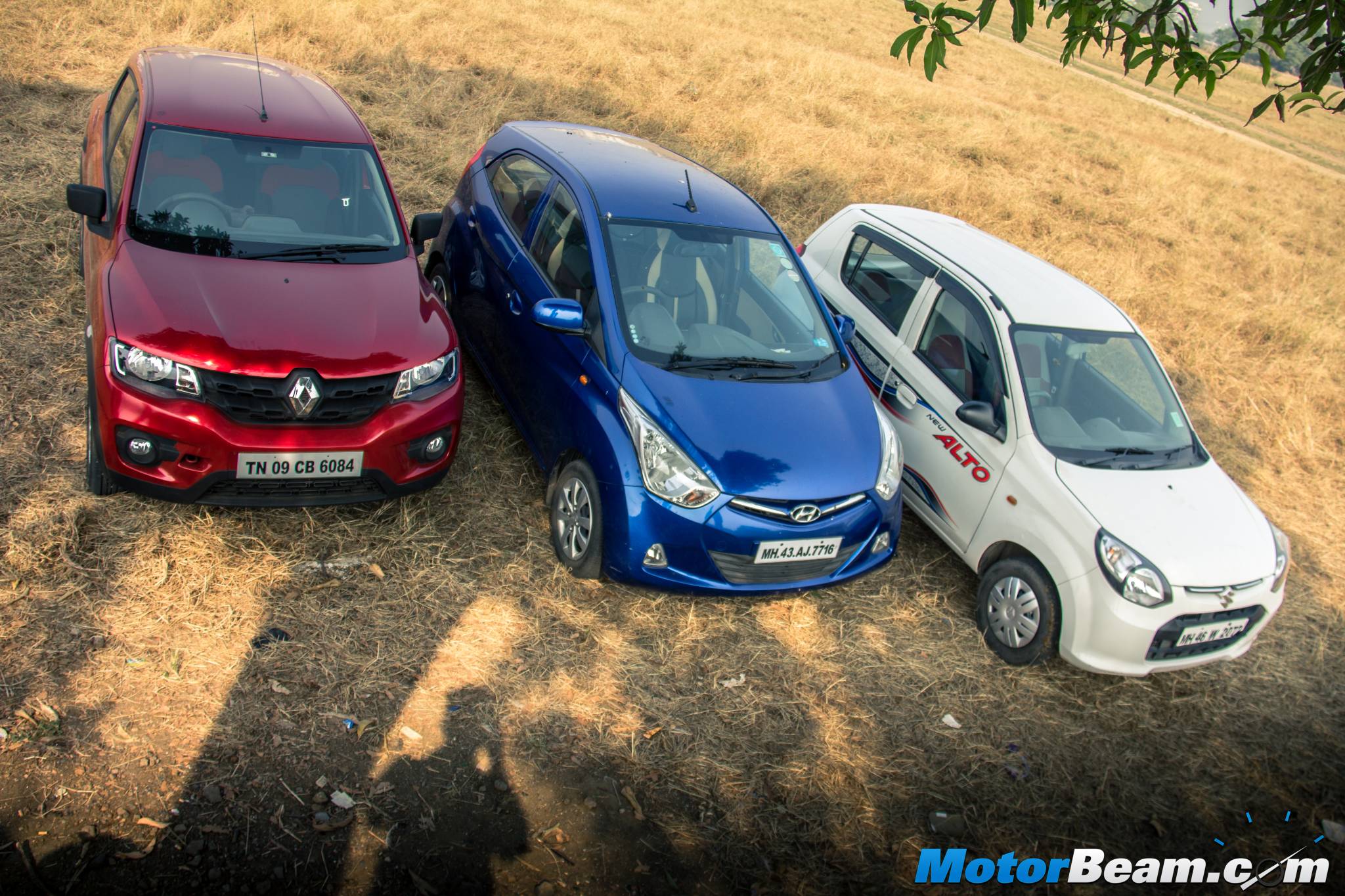
Shootout: Maruti Alto 800 vs Renault Kwid vs Hyundai Eon
Shootout No. 141
Price OTR Mumbai: Rs. 3.11 – 4.17 lakhs (Maruti Alto 800), Rs. 3.46 – 4.55 lakhs (Renault Kwid), Rs. 3.73 – 4.89 lakhs (Hyundai Eon)
The Renault Kwid brings a lot of freshness to the rather boring entry-level small car space
Demand for small cars is second to none in the Indian market and the options for first time car buyers is very limited. There is of course the Maruti Alto, a car which is most often the only choice of buyers while Hyundai brought in an upmarket alternative with the Eon. The Korean car wasn’t able to uproot the Indo-Japanese vehicle and thus the Alto continues to be the top selling car of our country. Now there is a new rival which has all that it takes to uproot Maruti’s dominance in the entry-level small car space, the Renault Kwid. The French car boasts of 97% localisation and has everything to become the segment king or does it?
Motor Quest: The Maruti Alto was launched in India in 2000 with the second generation model being launched in 2012. The Alto is India’s top selling car and takes over from the iconic 800. Hyundai launched the Eon in 2011 and gave it a more powerful 1.0-litre engine in 2014. The Kwid was launched in the second half of 2015 and Renault plans to launch a more powerful version of the car to compete with the Alto K10.
The Alto looks quite lacklustre in front of the more exciting Eon and Kwid
Styling – Cheap cars don’t need to look bad and that’s something Hyundai proved with the Eon and Renault followed up with the Kwid. Both these non-Japanese cars look attractive and don’t look like a small car on a small budget which the Maruti Alto does. The Alto 800 not only has bland styling, it also has ungainly proportions which are visible from some angles. The lack of a left side mirror on our test car further makes the Alto look made to a price while the Eon with its fluidic design language comes across as a striking vehicle and more costly than it actually is.
The Kwid’s bigger dimensions give it more presence than its rivals
The Eon looks sleek while the Kwid is more muscular with the SUV elements
However, it is the Renault Kwid which stands out here with its bold and SUV inspired design. The Kwid not only looks bigger but also has a lot of road presence, something you wouldn’t expect on an entry-level small car. With 180 mm ground clearance, black body cladding and a non-painted rear bumper, the Renault does end up looking more crossover than hatchback, thereby appealing to Indian buyers who long to own a crossover or SUV. Having nailed the design of the Kwid, Renault seems to have already won half the battle.
Interiors – When you step inside, the case is similar to the exteriors as the Maruti Alto doesn’t impress with its small cabin, average quality, lack of features and dated dashboard design. The Alto’s cabin is very narrow and thus hefty people sitting at the front will be a touch (pun intended) uncomfortable. The Alto also fares poorly when it comes to storage bins inside the cabin and tall people at the front are quite out of place as there is little space to move around with the low seating, under-thigh support being very poor. In comparison, the Hyundai Eon fares much better, having slightly better interior room thanks to its tall boy design.
The Renault Kwid excels in the interior department with the most equipment, cabin space and practical touches
The Hyundai Eon is unbeatable in terms of quality as it has the best fit-finish here, the quality of parts can make you mistake the vehicle for a more expensive car. The Korean automobile also excels in seat comfort as it has the best seats here, with the most back support on offer. But where the Eon loses out is the lack of rear seat space as the Kwid leads here by offering a rear-bench that’s so much more spacious and wide enough to seat three (the Alto and Eon are best for two at the rear), the only dampener being the manual retracting seat belts. Renault has done a fine job of incorporating a slew of storage spaces inside the cabin and there are two gloveboxes and lots of cubbyholes, making the Kwid a very practical car. The French car also has the biggest boot at 300-litres while the Hyundai Eon and Maruti Alto 800 have 215-litre and 177-litres of boot space respectively.
The Renault Kwid also beats its rivals hands down when it comes to equipment, featuring segment unique things like a touch-screen infotainment system with navigation and Bluetooth. It also gets a digital speedometer with distance to empty function but the outside mirrors aren’t internally adjustable which is surprising as both the Eon and Alto come with this basic feature. The Alto 800 doesn’t even get an audio system while the one of the Eon has CD and USB compatibility. The Maruti also misses out on front fog lamps while the Hyundai also gets a tilt-adjustable steering wheel. All cars being entry-level miss out on rear power windows and driver seat height adjustability.
All these cars use an 800cc, 3-cylinder engine with similar output
Performance – The Maruti Alto in K10 form and the Hyundai Eon are both available with 1.0-litre petrol engines that offer better performance over their small-engined units but at the moment, the Renault Kwid is only offered with a 799cc, engine and thus we shall restrict this comparison to the 800cc units. All cars use 3-cylinder motors, with the 814cc Hyundai mill being the most powerful producing 56 PS and 74 Nm. The DOHC engined Kwid is slightly lower on output, belting out 54 PS and 72 Nm but the Alto boasts of the least power, generating 48 PS and 69 Nm. But the Eon is the slowest here and the engine is a 9-valve unit, compared to the 12-valve powertrains of its rivals.
The Kwid might be lighter but the Alto 800 is the faster car
The Alto’s engine is the oldest but still the best while the Kwid is the most frugal and the Eon the smoothest
The Renault Kwid is a good 50 kgs lighter than the Maruti Alto and Hyundai Eon (both the Asian cars weigh the same). Even though the Indo-Japanese small car is the least powerful, it’s the quickest in the 0-100 km/hr sprint, taking 15.52 seconds against the Kwid’s 16.14 seconds and Eon’s 16.47 seconds. Clearly the old F8 engine is still a gem and hard to beat in terms of acceleration but it does get very vocal at high revs and the NVH is far from being the best, an area where the Eon does quite well with the smooth powertrain but there is some jerking at low revs. The Kwid is quite vocal at idle and also at low revs but smoothens out as you rev the car, the top-end being very good, thereby making it at home on the highway.
The Eon’s engine shines with its smoothness in front of the Kwid’s
While the Hyundai Eon revs the smoothest, the Maruti Alto feels the most punchy to drive and the Renault Kwid’s lack of mid-range makes one want to rev it harder. In-gear acceleration for all these cars is very similar and there is little to differentiate them in this regard but the clutch and gearbox are the smoothest on the Alto as the gears engage with surety while one does get the rubbery feel in the Eon and Kwid. All cars use a 5-speed manual transmission but the Kwid gets a dog-leg reverse system.
The Alto’s engine isn’t as smooth as the Eon’s which revs the best
Fuel efficiency is extremely important for a car buyer of this segment and the Hyundai Eon fares the worst of this lot, returning a claimed 21.1 km/l. The Maruti Alto fares better with 22.74 km/l but Renault has managed to beat both its rivals in the mileage department and that too comfortably as the Kwid manages to return not only a class best but the best mileage for a petrol car in India at 25.17 km/l (all figures are ARAI claimed). But the Kwid does have the smallest fuel tank here at 28-litres while the Eon can take in 32-litres and the tiny Alto has the highest capacity at 35-litres.
The Renault Kwid leads with the best ride quality and ground clearance
Driving Dynamics – These are entry-level cars so no one is really going to push them hard and even if they do, they will back off quickly because the steering wheel on all these cars don’t self-centre as well. But the Maruti Alto feels the best to drive as it has the superior handling here with good body control, the Renault Kwid coming in second and as expected, the Hyundai Eon comes last in this department. The soft suspension on the Korean hatch doesn’t help as there is a lot of nervousness when driving fast. The steering on the Eon is also the worst here with little to no feedback while the Alto feels the best and the Kwid comes in between, not feedback rich but good enough for city duties.
The Alto is the best handling car here, the Eon is the worst
The Kwid have a very mature ride quality and does a fantastic job over bad roads
Where the Renault Kwid annihilates its rivals is ride quality as it manages to glide over most of the bumps on our roads with utmost ease. There is this maturity in the way it tackles bad roads and is unfazed by surprises, even big bumps on the road not being of bother due to the high 180 mm ground clearance (160 mm on the Alto and 170 mm on the Eon). The Alto too has a good ride, although not in the league of the Kwid, it still does a decent enough job, more so when compared to the Eon which easily gets unsettled on bad roads. The stability at speed on all cars isn’t great so it’s best to drive them sedately while neither get ABS, not even as an option. Braking performance is the best on the Eon though, followed by the Kwid and Alto.
Maruti rules in after sales; neither cars are very safe
Safety and After Sales Service – All cars get the option of a driver side airbag and that’s about it with none of them to fare well in Global NCAP’s crash test. One of the major reasons as to why the Maruti Alto is the top selling car in India is the sales and after sales experience offered by India’s largest car maker. There is no beating Maruti in this regard and with the most number of outlets, the Alto continues to perform strongly when it comes to ownership experience. Hyundai too has done well in service while Renault needs a lot of catching up to do as it simply doesn’t have the presence, specially in smaller cities where small cars are so popular. Renault does offer class leading warranty and road side assistance.
The Kwid easily outshines its rivals by offering more bang for the buck
Verdict – Hyundai did bring a strong contender in the segment with the Eon but it wasn’t able to break Maruti Suzuki’s monopoly in this segment. Thus the Eon manages less than half the numbers of the Alto but does quite well in urban areas where people want an upmarket car, even if on a budget. The Renault Kwid is going to eat a bit of Alto sales and a lot of Eon numbers because not only is the French car better than the two, it manages to do it at an attractive price. The Kwid has street presence, offers more space, has a much better ride quality and feels very upmarket too. Renault has offered a desirable entry-level car which is both comfortable and frugal, making it the easy choice in the segment.
Although Renault has cut corners on the Kwid, the cost cutting isn’t very evident and makes this French small car terrific value. The Alto is a strong mechanical package which the Eon isn’t while the Kwid is a good mix of everything.
The Alto 800 has started to show its age in front of its modern rivals
Testers’ Note:
Catch All The Latest Videos, Subscribe To
Picture Editing – Sri Manikanta Achanta
Further Reading –
Renault Kwid Review
Maruti Alto vs Renault Kwid vs Hyundai Eon – Video


